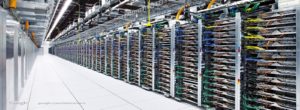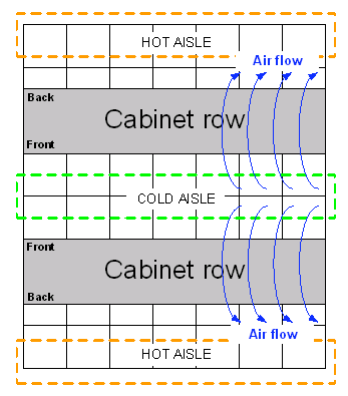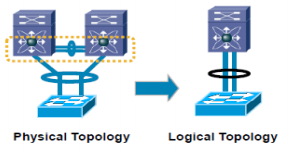Data Center Design

A data center is a very complex mix of technologies arranged in a very specific manner. The following posts aims to shed some light, albeit superficially, on the basic parameters to be thought during the design stages of building a data center.
Placing
The basic unit of data center structuring is the cabinet (also known as rack or enclosure) as it provides de frame in which to place equipment as well as manage cables. These can vary in height or width, but generally include a healthy supply of power plugs as well as ample room for adequate cooling. There tends to be a differentiation between network cabinets (N-type) and server cabinets (S-type); the former being somewhat wider due to the increased number of cords present.
Note that more often than not, an all-in-one cabinet solution is used which includes network connectivity with high availability for all machines involved. Furthermore, such structures simplify design time.
Insofar as how the cabinets are arranged, current best practices recommend a row-based layout, where servers are oriented with the fronts towards each other in one row, and the backs towards each other in another in an alternating fashion as shown in the following diagram.

Other aspects of data center design include cabling and placement within the building, although these will not be discussed in this post.
To read more regarding the layout of a data center (this post has barely covered the basics), the guide from Belden Inc. contains a wealth of information.
Network Connectivity
Switch placement in data centers is of the utmost importance when designing networking. The most common structure follows a top-of-the-rack approach where, as its name suggests, a switch is placed at the top of the cabinet. These are effectively the access layer of the structure, and are commonly refered to as leaves. Depending on the number of switches used in the distribution layer, two technologies can be used to forward data:
- Two switching units: If only two units are used, all access switches can be connected to each distribution switch, and, instead of using spanning-tree protocol, which severely underutilizes available bandwidth, create a virtual port-channel. This operates in much the same a regular port-channel does (where one switch has two connections to another), but operates with a 1-to-2 connection as shown below.

- More than two switching units: In this situation, more advanced protocols must be used to ensure all available bandwidth is used and all machines maintain maximum availability should any link fail. This mesh is known as network fabric, and is currently at the forefront of data center network design.
The networking units which form the core are known as spines. In recent years, the upper layers of the network have begun to evolve through the use of software-defined-networks. These help with automation and efficiency in a network. SDNs are a world of their own, and far surpass the scope of this post, but those interested should read up on VMWare's take on the subject by clicking here.
Storage
Thinking about storage, one would immediately imagine the traditional approach: each server has its own set of hard drives off which it operates. Indeed this used to be the case, after all, this easily allows servers to fulfill their tasks. However, a problem presents itself: resource allocation. Should a virtual machine running on a server occupy too much space, the only solution would be to erase other VMs or have an admin manually download the image of the large VM and transfer it to a new server. To solve this dilemma, a new solution was proposed: storage units. All hard drives can be placed within said units, and then develop a storage network through which data can be transferred seamlessly between machines. The network employed to this end is known as a SAN, or storage area network.
Security
As any reader surely knows, security plays an increasingly essential role in data center operation. The sheer breadth of the field is enough dazzle any newcomer, but some of the most important elements are:
- Firewall
- IPS
- Proxy and filtering
- Encryption
- VPN
- Antivirus
The solutions for each aspect include hardware and software-only products; couple that with the fact that there are a huge number of providers for each element, and making a choice becomes an arduous task. To that end, consulting firm Gartner publishes a regularly updated diagram where providers are scored on their vision of the present and towards the future, and their ability to execute. As a tip to our readers, even though Gartner requires payment to see the latest diagram, most developers will provide it as a selling point if additional information is requested through their system.